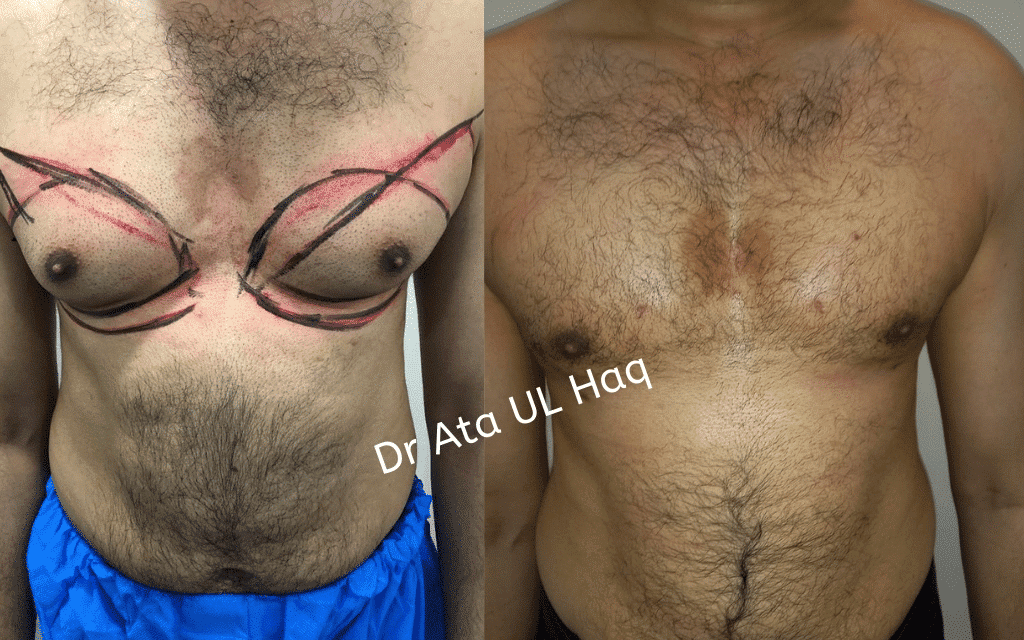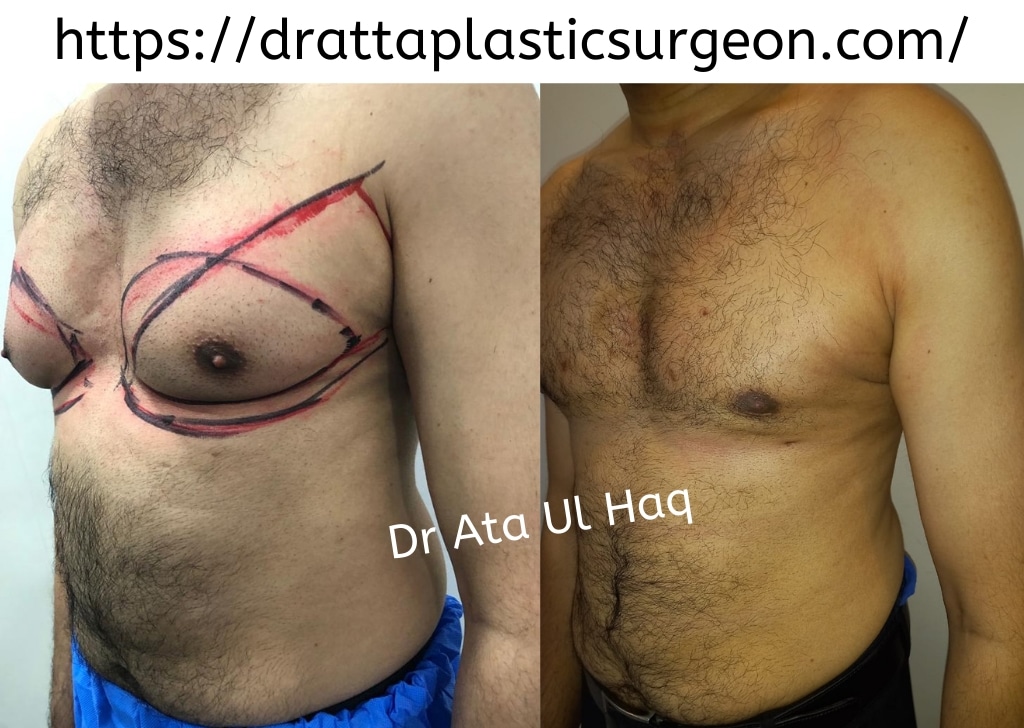A medical condition called gynecomastia is defined by the growth of male breast tissue, which frequently gives the chest a more feminine appearance. It is not a fatal illness, but it can have a big effect on a man’s confidence and sense of self. Gynecomastia has been the subject of increasingly candid conversations in recent years, which has raised awareness and put a stronger focus on finding medical remedies.
We will examine gynecomastia causes and treatment methods. One of the treatment methods is surgery. Gynecomastia surgery costs in Pakistan range from 90000 to 200000 rs. If you want to get gynecomastia surgery in Lahore, there are expert surgeons present.
Table of Contents
Causes Of Gynecomastia
Read in depth to get more…
Hormonal Abnormalities and Misuse of Drugs
An imbalance between the hormones testosterone and oestrogen is one of the main causes of gynecomastia. Up to 70% of boys may experience this imbalance throughout puberty. It can also develop later in life as a result of ageing, pharmaceutical side effects, or underlying medical issues. Gynecomastia can result from using certain drugs, such as anabolic steroids, anti-androgens, and some antidepressants. This disorder has also been connected to substance misuse, including the abuse of marijuana or excessive alcohol usage. Gynecomastia can arise from chronic health disorders that upset the hormonal balance, such as hyperthyroidism, liver illness, and renal failure.

Approaches for Treatment
Here are some of the treatments you need to consider.
Improvements in Lifestyle
Changes in lifestyle may be advised if gynecomastia is brought on by conditions like obesity or substance misuse. Reducing breast tissue can be facilitated by eating a balanced diet, exercising frequently, and giving up dangerous substances.
Drug Therapies
In cases where hormonal imbalance is the underlying cause of gynecomastia, prescription drugs like tamoxifen and raloxifene may be administered to treat the condition. These medications function by preventing oestrogen’s effects on breast tissue.
Surgery
Surgical surgery becomes an effective alternative when non-invasive treatments fail to produce the desired results. A mastectomy is the most common treatment in which extra breast tissue is surgically removed. To address the extra fat deposits, liposuction may potentially be a part of this operation.

Consulting
To determine contributing variables and gauge the extent of gynecomastia, the plastic surgeon performs a thorough examination. A correct diagnosis requires a thorough examination of the patient’s medical history, including any pre-existing diseases, drugs, and prior procedures. The surgeon goes over the numerous alternatives for therapy, emphasising the possible advantages and disadvantages of each.
Examinations prior to surgery
To make sure the patient is healthy and ready for surgery, routine blood tests are performed. To obtain a more thorough look at the tissue, imaging tests like mammograms or ultrasounds may be advised in specific circumstances. To reduce the risk of complications both during and after the surgery, it is imperative to have a conversation regarding any drugs being taken.
The Surgical Process
Step 1: Anaesthesia
When talking about anaesthesia choices, the surgeon usually suggests general anaesthesia to ensure the patient’s safety and comfort throughout the treatment. Anesthesiologists can meet with patients to go over their medical histories and address any anaesthesia-related concerns.
Step 2: Precise Incisions
To reduce obvious scarring, the surgeon carefully positions incisions in the natural creases of the chest or around the areola.
Step 3: Tissue Removal and Closure of Incisions
The surgeon may use a variety of procedures, including as direct excision to remove glandular tissue or liposuction to remove fat, depending on the severity of gynecomastia. Expert surgeons place a high value on accuracy in order to provide symmetrical and beautiful outcomes. The surgeon carefully uses sutures to close the wounds after removing tissue. The use of dissolvable sutures eliminates the necessity for removal. If there are any external sutures, they usually come out in a week.

Recovery
Patients are given comprehensive instructions on how to take care of their wounds, control their discomfort, and wear compression garments following gynecomastia surgery. The surgeon can evaluate healing progress, address any issues, and remove sutures if required during scheduled follow-up consultations. Based on each patient’s unique healing status, recommendations are given regarding when it is safe to resume regular activities, such as employment and exercise.
Risks
The risks of bleeding and infection are addressed, although they are rare, along with precautions to take and symptoms to look out for while recovering. The surgeon gives information on scar care strategies and discusses the possibility of scarring. It is discussed with patients to moderate their expectations when there are brief variations in nipple sensation.
Summing up
Despite being a common ailment, gynecomastia can significantly lower a man’s quality of life. Effective management of gynecomastia requires knowing the available treatment choices, selecting a skilled surgeon, and seeking professional assistance. The medical community in Lahore, Pakistan, is well-prepared to offer people the knowledge and assistance they need to make this journey towards a more self-assured and contented life.

